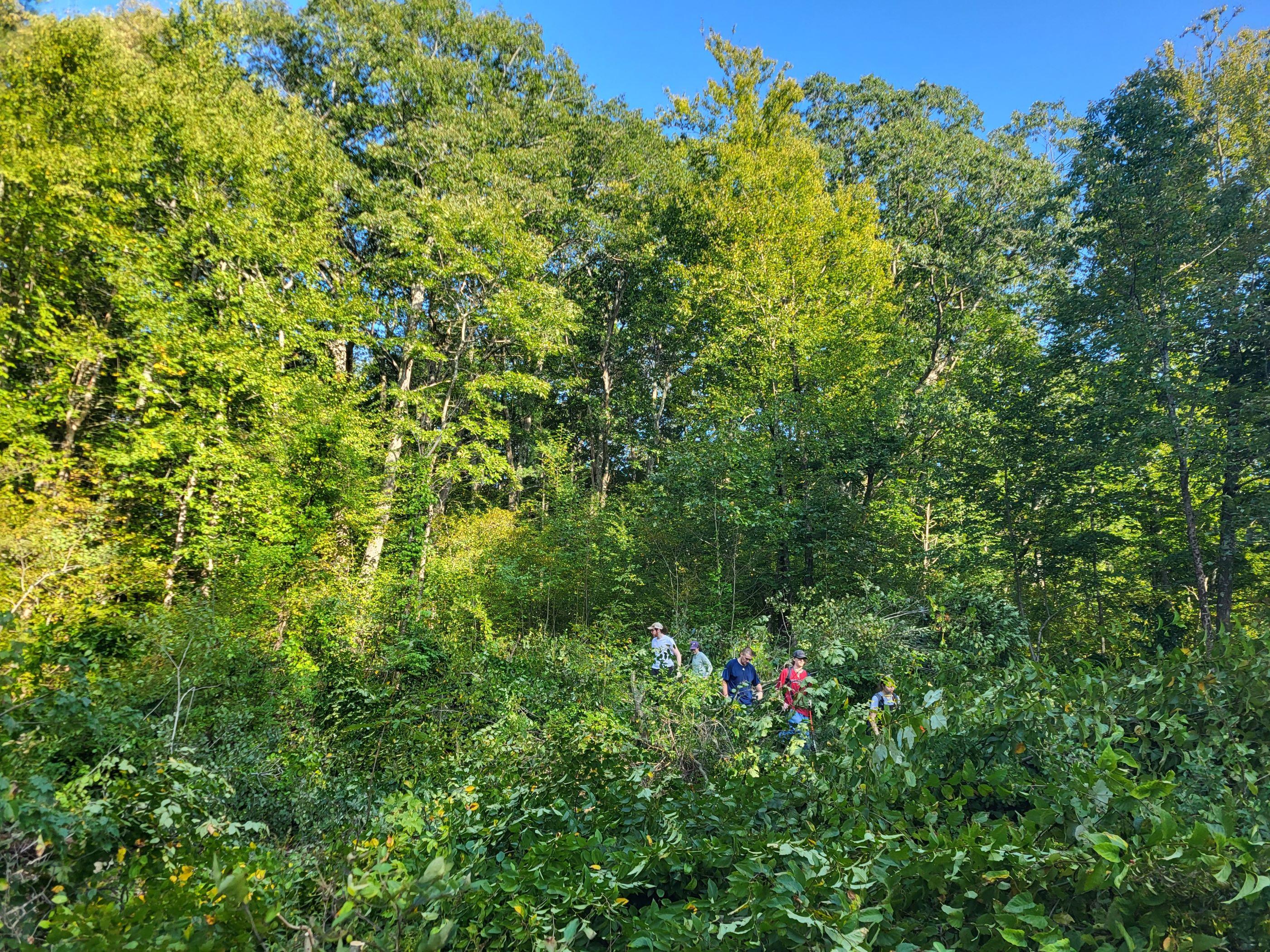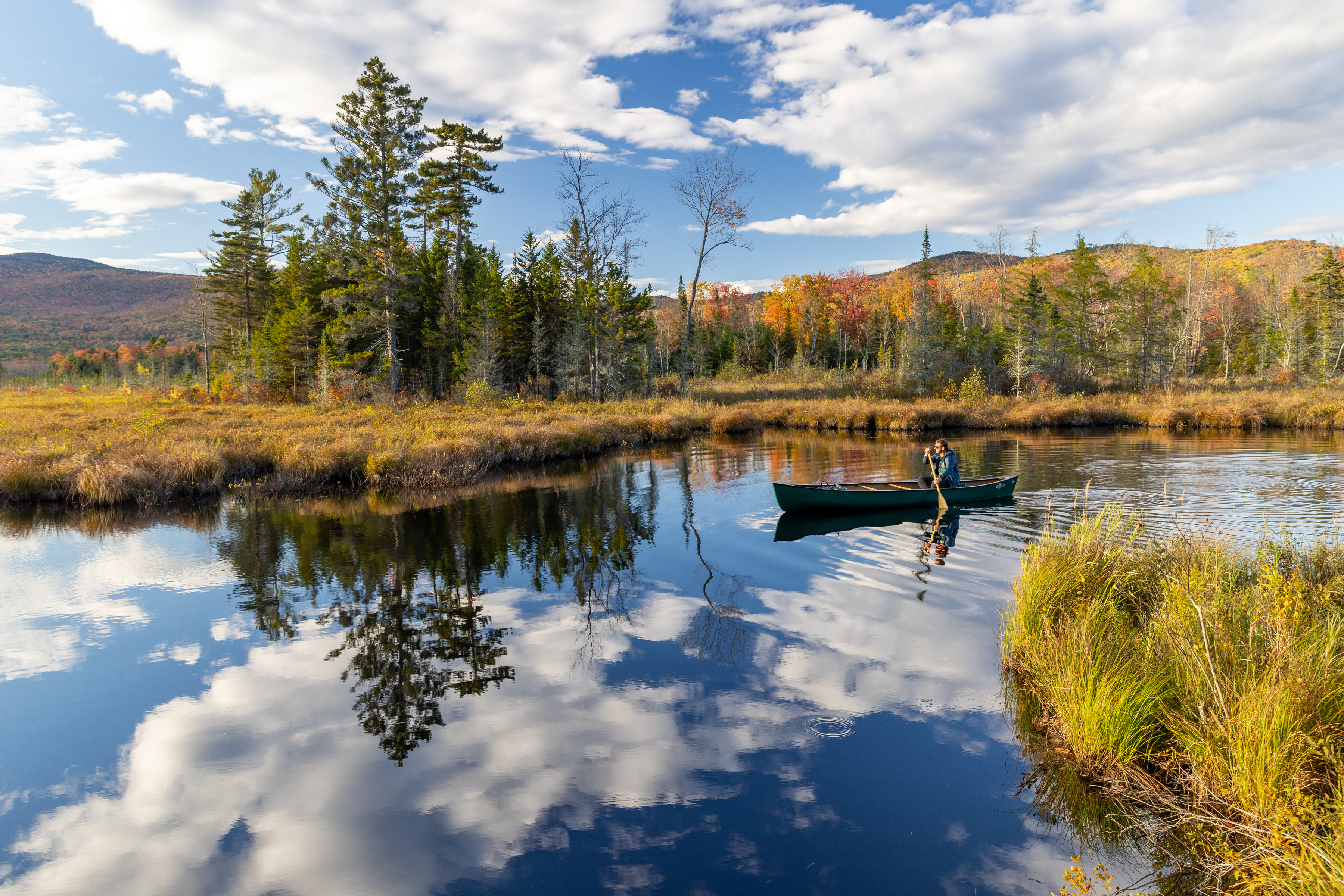- Tags:
- Forestry
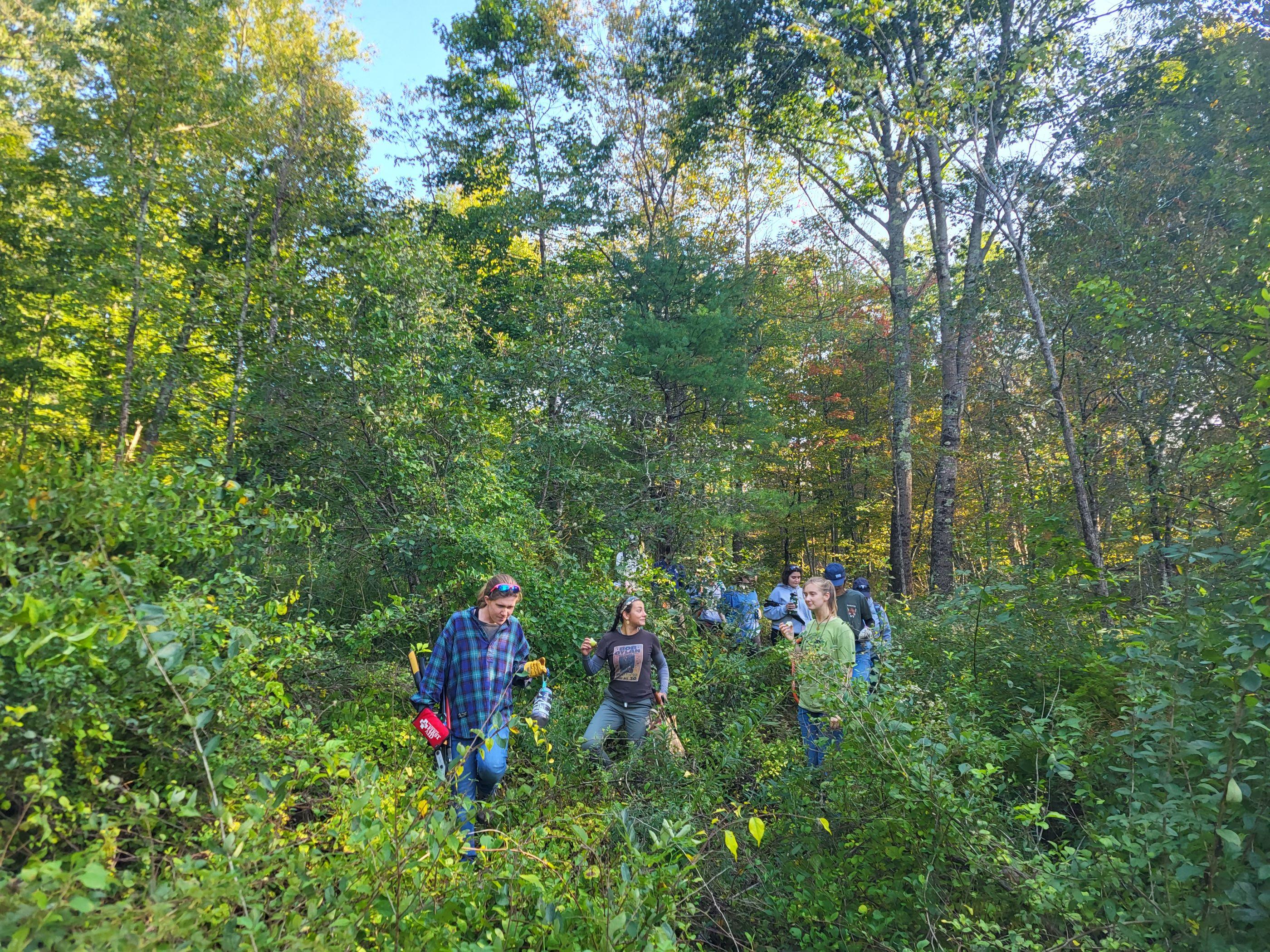
Students marching out through habitat at end of workday on Hills Family Forest.
Field Forester Steve Junkin took two days last week to work with the University of New Hampshire's Wildlife Habitats Class. 31 total students participated in these two workdays at the Forest Society's Hill Family Forest in Durham and Madbury, New Hampshire. The focus of the day was to learn about New England Cottontail Rabbit (NEC) habitat and see the habitat up close and personal.
Steve provided an overview of the land protection effort in protecting Hills Forest and the cooperative management approach that nearby partners participate in to increase the available habitat for the NEC.
This partnership between groups and agencies helped prevent the New England cottontail from being listed in the Endangered Species Act because on the ground work was demonstrating success in maintaining the small population on the landscape in its current range.
The Forest Society harvested trees from a 15 acre area 12 years ago. The habitat that grew back was excellent but has a lifespan of suitability for NEC. NEC requires dense regenerating thickets, almost impenetrable. As trees that became established grow, the canopy that these trees create, shades out the valuable low vegetation and shrubs the species requires.
In order to maintain the habitat forest managers will hire machines to mulch trees, or contractors to cut these overstory trees with chainsaws and brushsaws. Rather than hand over the helm of a skid steer or a high powered and dangerous chainsaw to these wildlife students the choice was hand tools to cut the invading tree species.
Here's the group after day one:
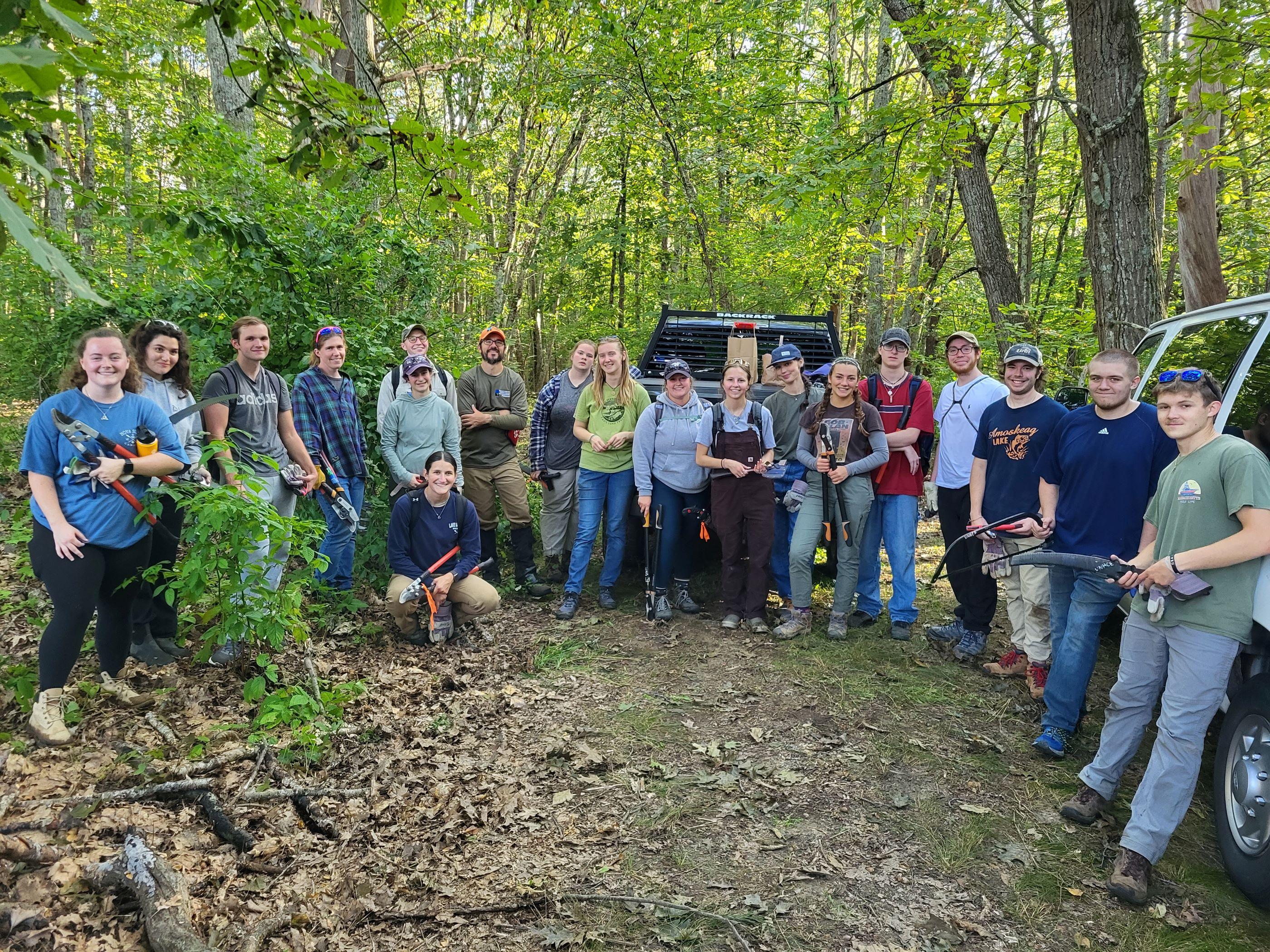
And here's the group again after the second day of hard work:
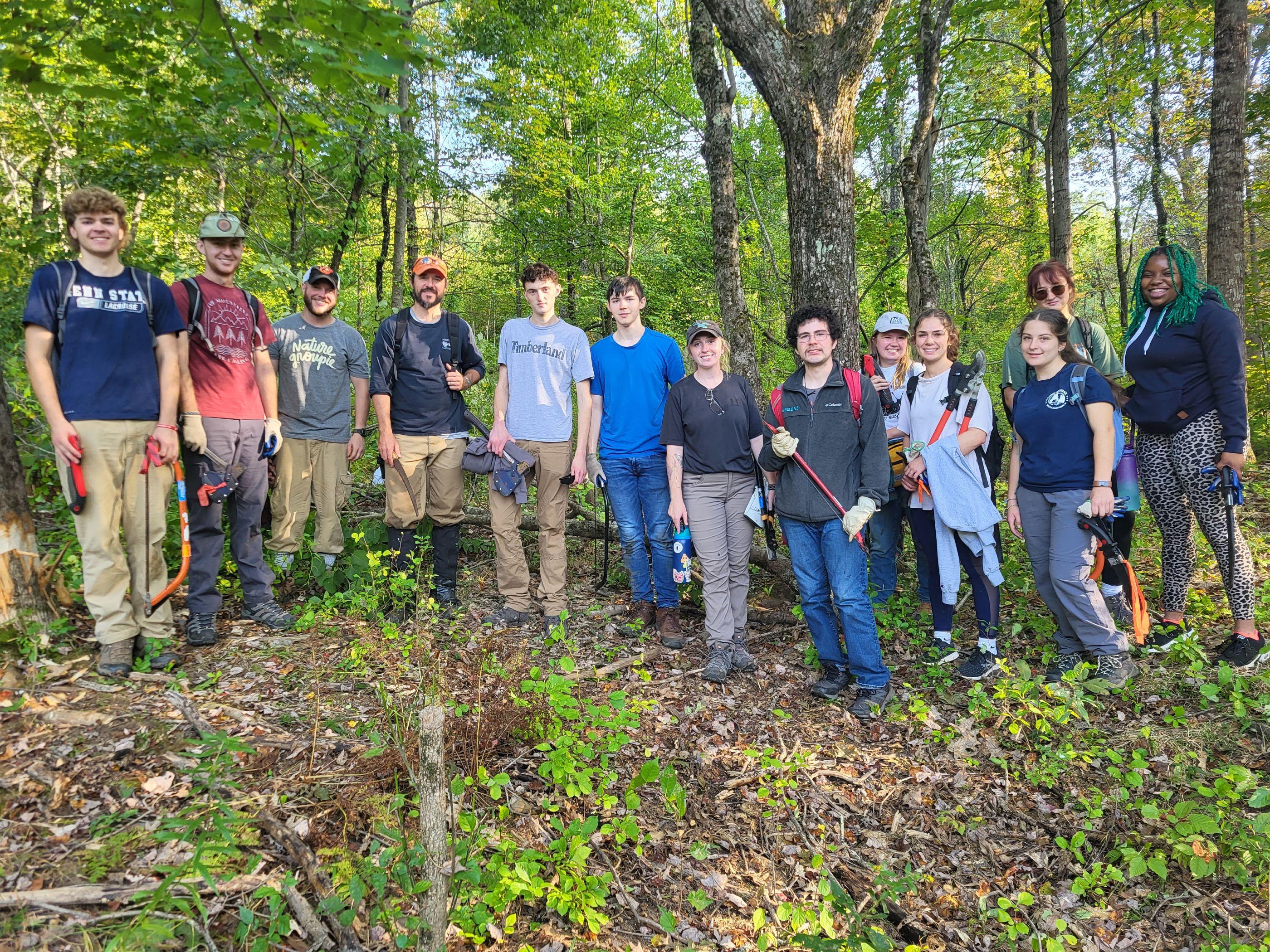
Students worked in small groups cutting trees with loppers and small hand saws, including white pine, white ash, red maple, red oak, and black birch. Trees and shrubs that were favored and not cut include nanny berry, dogwood, rasberry, black berry, maple leaf vibernum, apple, and — yes — even invasives plants such as multiflora rose. Remember the impenetrable thicket these rabbits need? Nobody wants to walk through multiflora rose — not even a bobcat, fox or red-tailed hawk!
This is a photo of the ideal condition of New England Cottontail habitat:
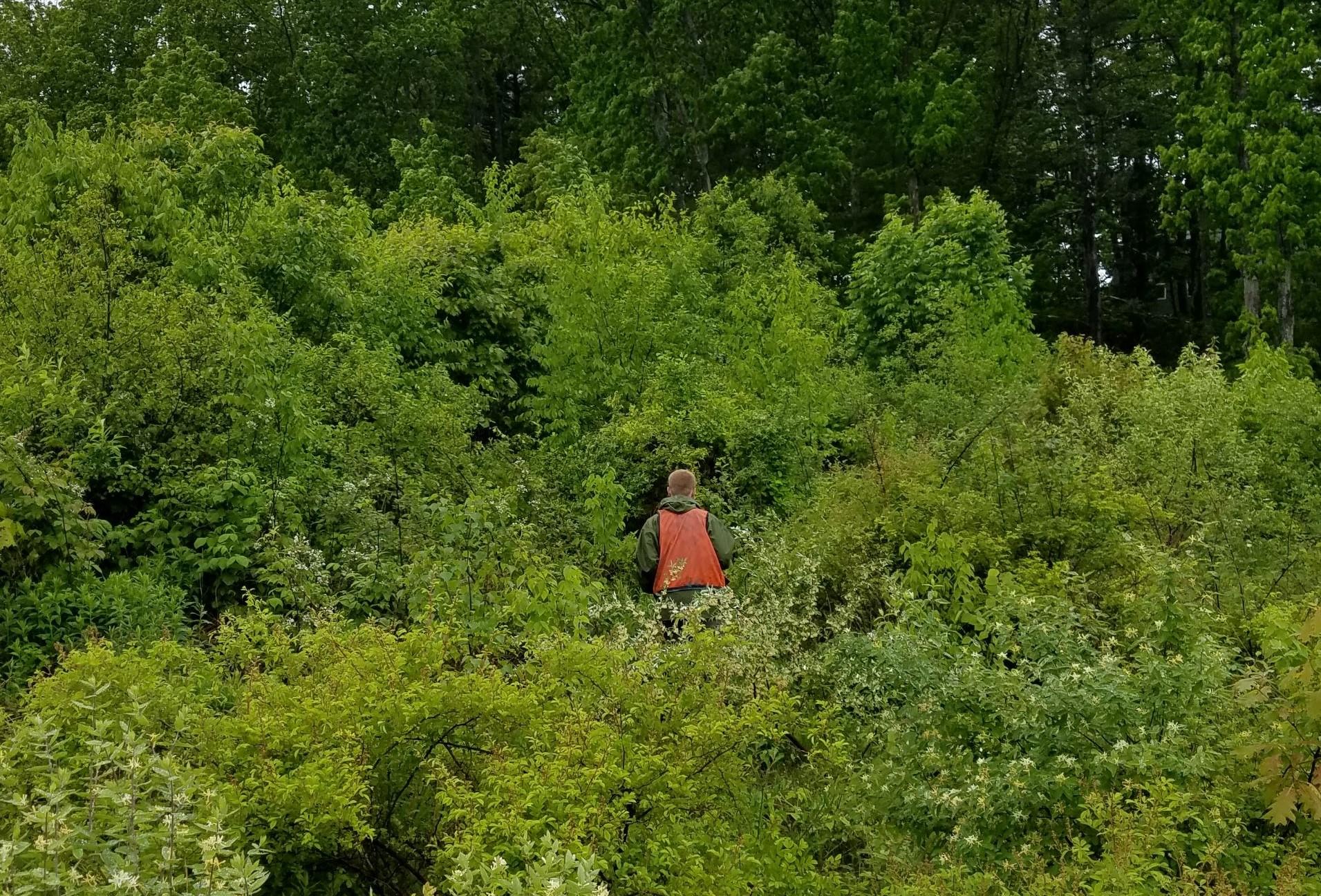
The cut trees are dropped and left on site. These will provide cover for a period of time for NEC as well as fresh browse that would not have been available to them. Shrubs will spring forth with the increased sunlight once again providing the habitat needs this rare species requires.
